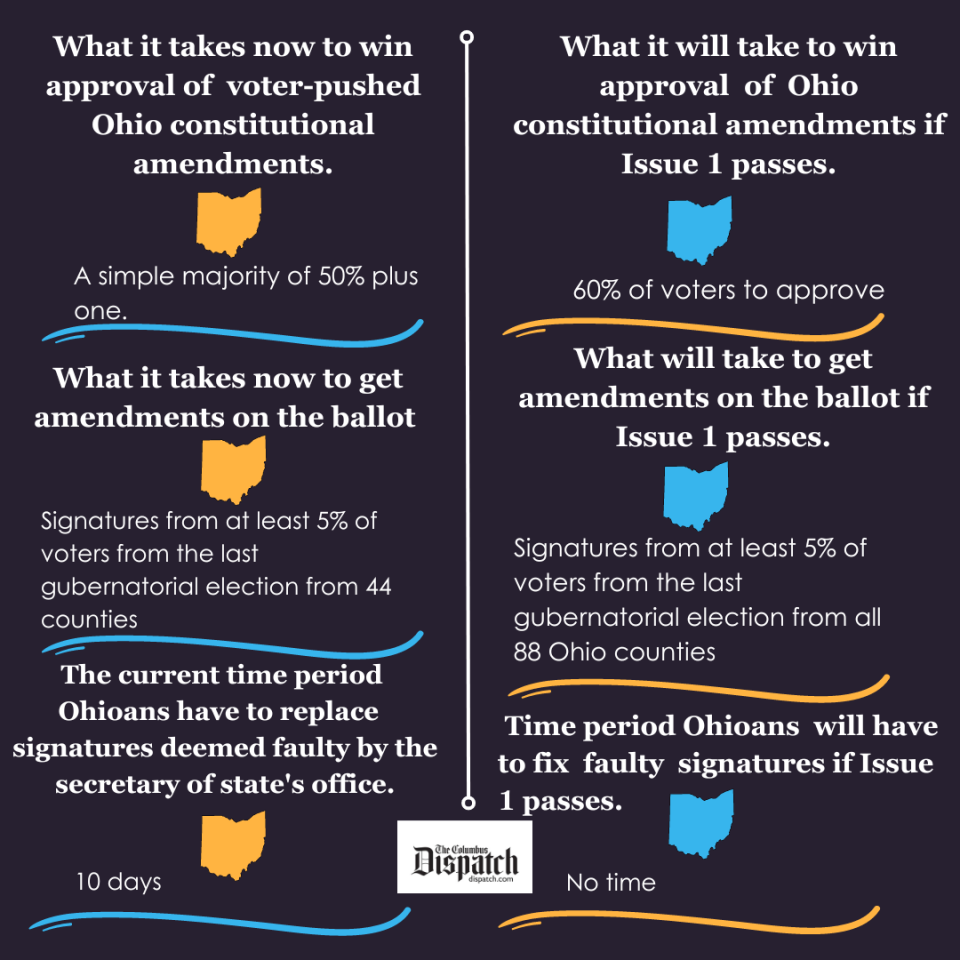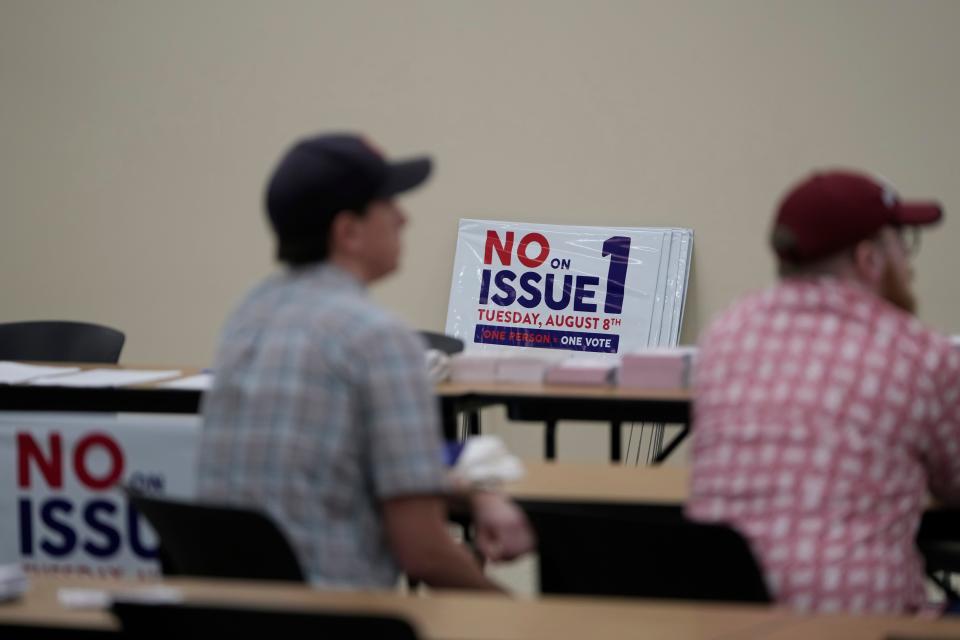Issue 1 a costly effort to erase a right Ohioans have had 111 years| Opinion
Lee Hannah is a professor of political science at Wright State University. His teaching and research focus on state politics.
The popular initiative was an early 20th century innovation that was devised to rein in unaccountable state legislatures and governors.
It allows voters to write legislation that their fellow citizens will vote on.
In 1906, The Oregonian described the initiative like this: “It has made two legislatures in Oregon where there was only one. If one will not enact a bill, perhaps the other will…The real function of the initiative is to make every man his own legislature.”
For 111 years, Ohioans have had the right of acting as their own legislature when lawmakers won’t address issues that matter to them.
Issue 1 will drastically change that right.
Business leader: An end to majority rule in Ohio? Issue 1 an unprecedented affront to democracy
A number of writers for this publication and others have made excellent arguments against Issue 1. Rather than repeat those arguments, this essay presents a few additional points voters should consider.
More: House minority leader: Issue 1 about 'drunk on power' liars and their well-documented deceit
More: Who is against Issue 1? Guest columnists give reasons to vote 'No' on Issue 1
Our view: 'Power-hungry hypocrites' trying to con Ohio. Issue 1 about dominance, deceit| Our view
In 1912, the state of Ohio adopted the popular initiative at its constitutional convention. Since then, voters have used it prudently, approving 19 amendments out of the 71 proposed by the initiative. The popular initiative has been used to limit property tax hikes, eliminate straight ticket voting, and term limit members of the statehouse. On top of this, the legislature has sent out more constitutional amendments for voters to approve (106 amendments approved of 157 proposals).
To qualify for the ballot, supporters have to get signatures from Ohio voters in 44 of Ohio’s 88 counties. Then the bill must be approved by the majority of Ohioans. There is also an initiated statute, which has similar requirements but only changes the Ohio Revised Code.
The problem is, the legislature can repeal or nullify the measure with little resistance. That’s why only 3 initiated statutes have been approved compared to 125 constitutional amendments.
Issue 1 would not only raise the vote threshold to change the Constitution from 50% to 60% – but it heaps on additional requirements including requiring a minimum number of signatures in each of the 88 counties and no cure period to address errors in the petitions.

As former Republican Attorney General Betty Montgomery said, "When you combine the 88 counties, no cure period and an August election, it looks awfully much like it was intended to close the door and lock it.” She’s right. A number of groups that have historically used the initiative process to change laws will view the requirements in Ohio as too costly and risky.
More: Think Ohio lawmakers are out of control now, they'll have near-monopoly if Issue 1 passes| Suddes
Furthermore, supporters of Issue 1 have argued that gathering signatures from 44 counties allows large, liberal city interests to bully rural voters. But Trump carried 37 of the 44 largest counties in the state. The 25th largest county in Ohio is Miami – hardly an urban center. Proponents already need to get signatures (and buy-in) from small, conservative communities – the 88-county requirement just adds unnecessary costs.
Furthermore, one should carefully consider what else the popular initiative can do. Popular initiatives can bring attention to issues and pressure the lawmakers to act. Political science research shows that the mere threat of an initiative is enough to make legislators address policies that they might want to ignore.
In 2015, Ohioans voted down Issue 3, an amendment that would have legalized marijuana in the state. The initiative had several flaws and was voted down by a 2-to-1 margin. But it did start a conversation about marijuana - including polling that showed 90% support for medical marijuana. In 2016 (with the threat of another initiative on the ballot), the state quickly moved a medical marijuana law through the statehouse.
Without the initiative, it is unlikely that our legislature would have acted; and a popular and well-run program would have never been established. Even when an initiative fails, it can impact the policies we have in the state and it can make our lawmakers listen.
Additionally, the purpose of the Ohio Constitution has been unfairly conflated with the U.S. Constitution. The U.S. Constitution, which requires supermajorities to amend, is meant to be a limited document. Ohio and other state constitutions are more comprehensive documents that require regular change.

James Madison wrote, “The powers delegated by the proposed constitution to the federal government are few and defined. Those which are to remain in the State governments are numerous and indefinite.”
The U.S. Constitution is merely 7,591 words long – the Ohio Constitution is nearly 60,000 words long and includes sections on education, lotteries, livestock, and several other issues. The state constitution is designed to be more comprehensive and fluid than the U.S. constitution.
The August special election is a rushed and costly effort to fundamentally change the initiative – a process that has worked well and with little controversy for 111 years. It’s important to have an honest discussion about what is at stake. The initiative is a powerful tool that both conservatives and liberals have used to change laws and bring attention to issues that voters care about. Vote “no” to keep that power in the hands of Ohioans.
Lee Hannah is a professor of political science at Wright State University. His teaching and research focus on state politics.
'No' on Issue 1: Deacon: 'No' on Issue 1 to protect Ohio from greed, stop 1 county from blocking will of majority
Issue 1 to cause near-monopoly: Think Ohio lawmakers are out of control now, they'll have near-monopoly if Issue 1 passes| Suddes
This article originally appeared on The Columbus Dispatch: Why is Issue 1 bad? What is a voter-initiated amendment? |Opinion

